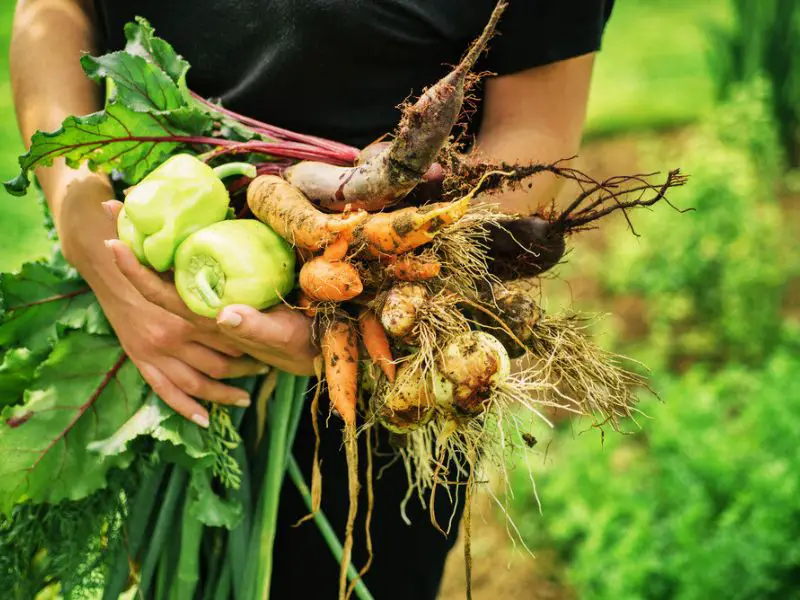Sustainable living is far from a novel idea. Its roots stretch back to ancient civilizations that practiced sustainable agriculture, harvested rainwater, and built energy-efficient dwellings. However, in the modern context, sustainable living as a conscious lifestyle choice gained prominence during the environmental movement of the 1960s and 1970s. This was when people began to understand the finite nature of our planet’s resources and the vast human capacity to exploit them.
Fast forward to the 21st century, the concept of sustainable living has moved from the fringes of society to the mainstream. As climate change’s harsh realities become more evident and pressing, an increasing number of individuals, communities, and governments are recognizing the need for sustainability. It’s now understood that our daily actions and lifestyle choices can either contribute to or mitigate the current environmental crisis.
In response to the urgent call for sustainability, the United Nations has integrated sustainable living into its Sustainable Development Goals (SDGs). This shows a global recognition of the importance of sustainable lifestyles in achieving environmental, economic, and social well-being for all.
This article aims to provide practical tips for adopting a greener, more sustainable lifestyles. Whether it’s embracing minimalism, practicing organic farming, or investing in sustainable businesses, each action we take can contribute to a healthier planet and a brighter future.
10 Sustainable Lifestyles
1. Zero Waste Living
A zero-waste lifestyle aims to eliminate waste by reusing, recycling, and composting. Not only does this involve avoiding single-use items and buying in bulk, but it also encourages the use of reusable bags and containers. DIY cleaning and personal care products can further help cut down on packaging waste, making this lifestyle a practical and straightforward approach to sustainability.
- Sustainability: Zero waste living is sustainable as it emphasizes the elimination of waste, not just its management. It targets the source of waste, reducing the extraction of resources and minimizing landfill accumulation.
- How to do it: Begin by reducing and eventually eliminating purchasing packaged goods. Compost your kitchen waste and learn to reuse or recycle materials creatively. Attend workshops or online courses that educate on zero-waste living strategies.

2. Minimalist Lifestyle
Minimalism promotes living with fewer possessions to reduce environmental impact and simplify life. A minimalist lifestyle involves:
- Decluttering.
- Investing in quality items that last.
- Consciously avoiding fast fashion and disposable products.
It’s a mindful way of living that values need over want.
- Sustainability: By reducing material consumption, the minimalist lifestyle lessens the demand for manufacturing, thus lowering carbon emissions. It ultimately aids in conserving natural resources.
- How to do it: Start small by decluttering a single space at a time and gradually move to other areas. Practice mindful shopping, asking yourself whether a purchase is necessary before deciding.

3. Sustainable Investing
Sustainable investing focuses on supporting companies that prioritize environmental, social, and administrative factors. By putting your money into sustainable businesses, you encourage the growth of businesses committed to making a positive environmental impact.
- Sustainability: Sustainable investing promotes companies that value the planet and its inhabitants. This investing pressures businesses to become more responsible in their operations, contributing to overall global sustainability.
- How to do it: Contact financial advisors who know sustainable investing. Evaluate your investment portfolio and gradually transition to sustainable stocks and bonds.
4. Eco-Travel and Sustainable Tourism
This lifestyle promotes conscious traveling that minimizes environmental impact. Choosing eco-friendly accommodations, supporting local businesses, and reducing carbon emissions are integral to eco-travel and sustainable tourism. You contribute to a more sustainable tourism industry by making mindful travel choices.
- Sustainability: Eco-travel reduces the carbon footprint of tourism, preserves local ecosystems, and supports the local economy.
- How to do it: Plan and research thoroughly before your trip. Opt for eco-friendly travel agencies and accommodations. Respect local culture and natural sites. Consider taking trains or buses over planes.

Explore the magic of an Office Garden, the art of Permaculture Garden, and the wonders of an Indoor Vegetable Garden. Elevate your space with green goodness and cultivate your own urban oasis!
5. Slow Fashion
Slow fashion is an alternative to fast fashion, emphasizing quality over quantity, longevity over trends, and fair labor practices over profit margins. By choosing slow fashion, you support brands that prioritize sustainability and ethics.
- Sustainability: The slow fashion movement combats fast fashion’s environmental and human exploitation problems. It promotes mindful consumption, resource conservation, and fair labor practices.
- How to do it: Choose brands that are transparent about their manufacturing process. Learn to mend your clothes and invest in timeless pieces instead of trend-driven clothing.
6. Organic Farming and Gardening
Growing food without synthetic fertilizers and pesticides is at the heart of organic farming and gardening. Whether you grow your food or support local organic farmers, this lifestyle helps reduce carbon emissions and promotes sustainable agriculture.
- Sustainability: Organic farming preserves soil integrity, reduces water contamination from synthetic pesticides and fertilizers, and promotes biodiversity.
- How to do it: If space permits, start your organic garden. Use compost for soil enrichment. For those without a garden, support local organic farmers by buying their produce.

Discover a treasure trove of Organic Farming and Gardening tools that make green living a breeze. Click here.
7. Green Energy Consumption
Green energy consumption involves using renewable energy sources such as solar, wind, and hydroelectric power. By minimizing dependence on fossil fuels and promoting renewable energy, you actively contribute to reduce climate change.
- Sustainability: Green energy consumption helps to reduce greenhouse gas emissions, decreasing the impacts of climate change. It encourages technological advancements in renewable energy.
- How to do it: Install solar panels, and switch to energy-efficient appliances. Reduce unnecessary energy usage and consider subscribing to a green energy provider.
8. Second-Hand and Swap Culture
Second-hand and swap culture is all about reusing and recycling. Buying used or swapping items reduces waste and supports a circular economy, where products and materials are kept in use for as long as possible.
- Sustainability: Second-hand and swap culture extends the life cycle of products, reduces waste, and decreases the need for manufacturing new goods.
- How to do it: Visit local thrift shops, use online platforms for second-hand goods, and participate in or organize swap events in your community.

9. Tiny House Living
Tiny house living involves residing in a compact, energy-efficient space. By downsizing and simplifying, you reduce your environmental impact and live more sustainably. This lifestyle saves energy and promotes a simpler, less cluttered life.
- Sustainability: Tiny house living reduces energy use and waste while decreasing land and construction materials demand. It also encourages a less consumer-driven lifestyle.
- How to do it: Consider downsizing your living space. If moving to a tiny house is not an option, apply the principles of tiny living by maximizing space usage and reducing clutter in your current home.

10. Veganism
Veganism is a lifestyle choice to exclude all animal products, including meat, dairy, and eggs, from one’s diet. Opting for a plant-based diet helps decrease greenhouse gas emissions, conserve water and soil, and promote a more sustainable food system. By incorporating these sustainable lifestyle choices into your daily routine, you can help conserve
- Sustainability: Veganism significantly reduces water usage, land degradation, and greenhouse gas emissions associated with animal farming. It also helps in reducing deforestation for animal grazing.
- How to do it: Gradually reduce your consumption of animal products. Explore new recipes, try vegan substitutes, and eat a varied diet to ensure you’re getting all the necessary nutrients.

Benefits of a Sustainable Lifestyle
Living a sustainable lifestyle doesn’t only benefit the planet, but it also directly helps you. These benefits can be personal, economic, and societal. These benefits include healthier living through better food and product choices, financial savings through reduced consumption, and a sense of well-being and satisfaction from knowing you’re part of the solution to environmental challenges.
Challenges to Sustainable Living and Overcoming Them
While the advantages of a sustainable lifestyle are clear, one might face certain obstacles when shifting toward these practices. Some challenges include the initial costs, convenience, and resistance to change. Overcoming these challenges often involves education, planning, budgeting, and taking small, manageable steps toward sustainable habits. Resources such as guides, community groups, and online forums can offer valuable advice and support.
The Role of Communities and Governments in Promoting Sustainable Lifestyles
Promoting sustainable lifestyles requires a collective effort, including support from communities and governments. Communities can play a role through initiatives such as local farmers’ markets, swap meets, and community gardens. Conversely, governments can encourage sustainable living through regulations, incentives, and public awareness campaigns. Together, they can provide the structures and systems to support sustainable lifestyles.
Adopting these sustainable lifestyles can have a profound impact on our planet. Remember that small steps matter. Even seemingly minor changes can accumulate over time and contribute significantly to a better planet.

